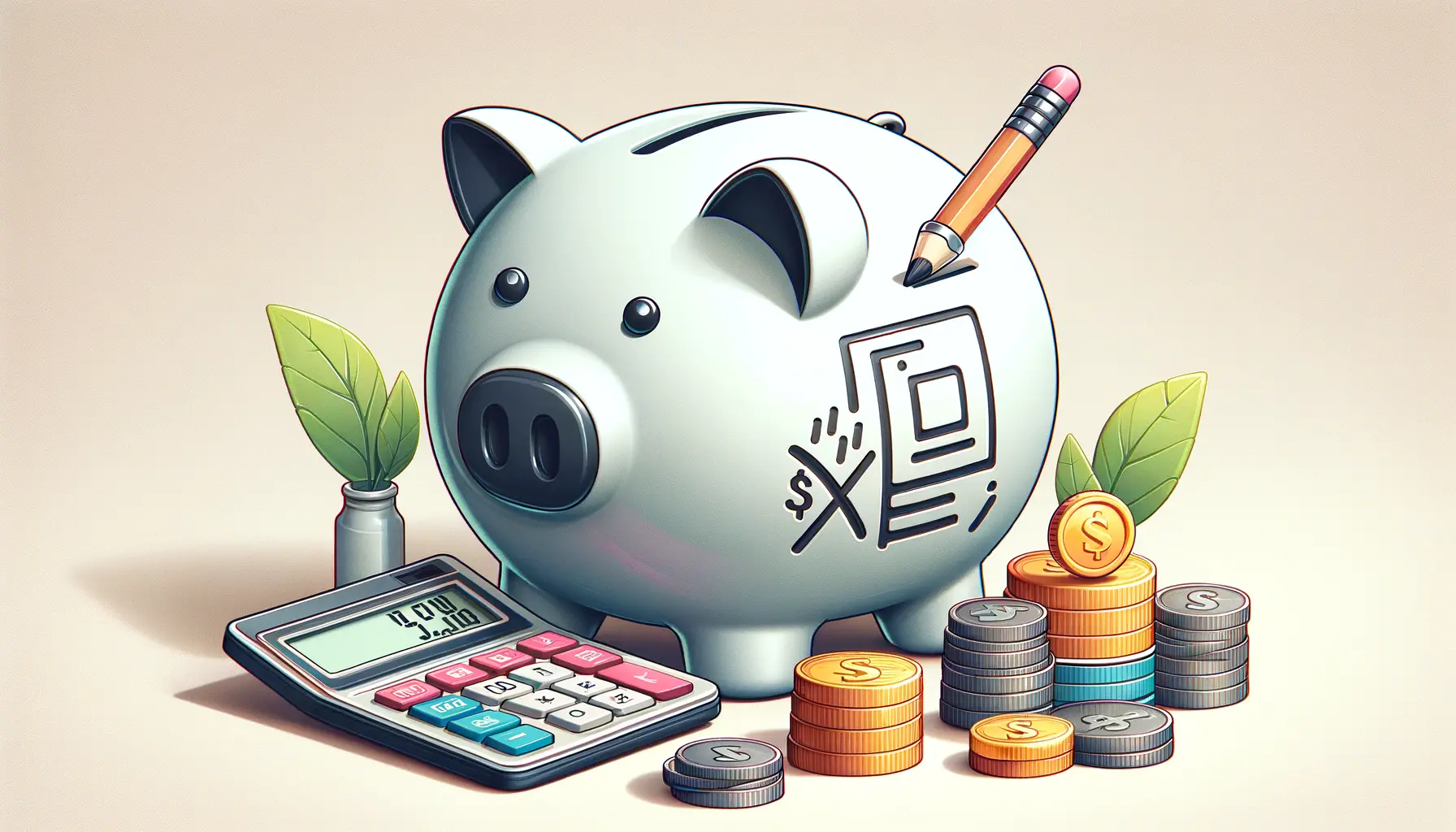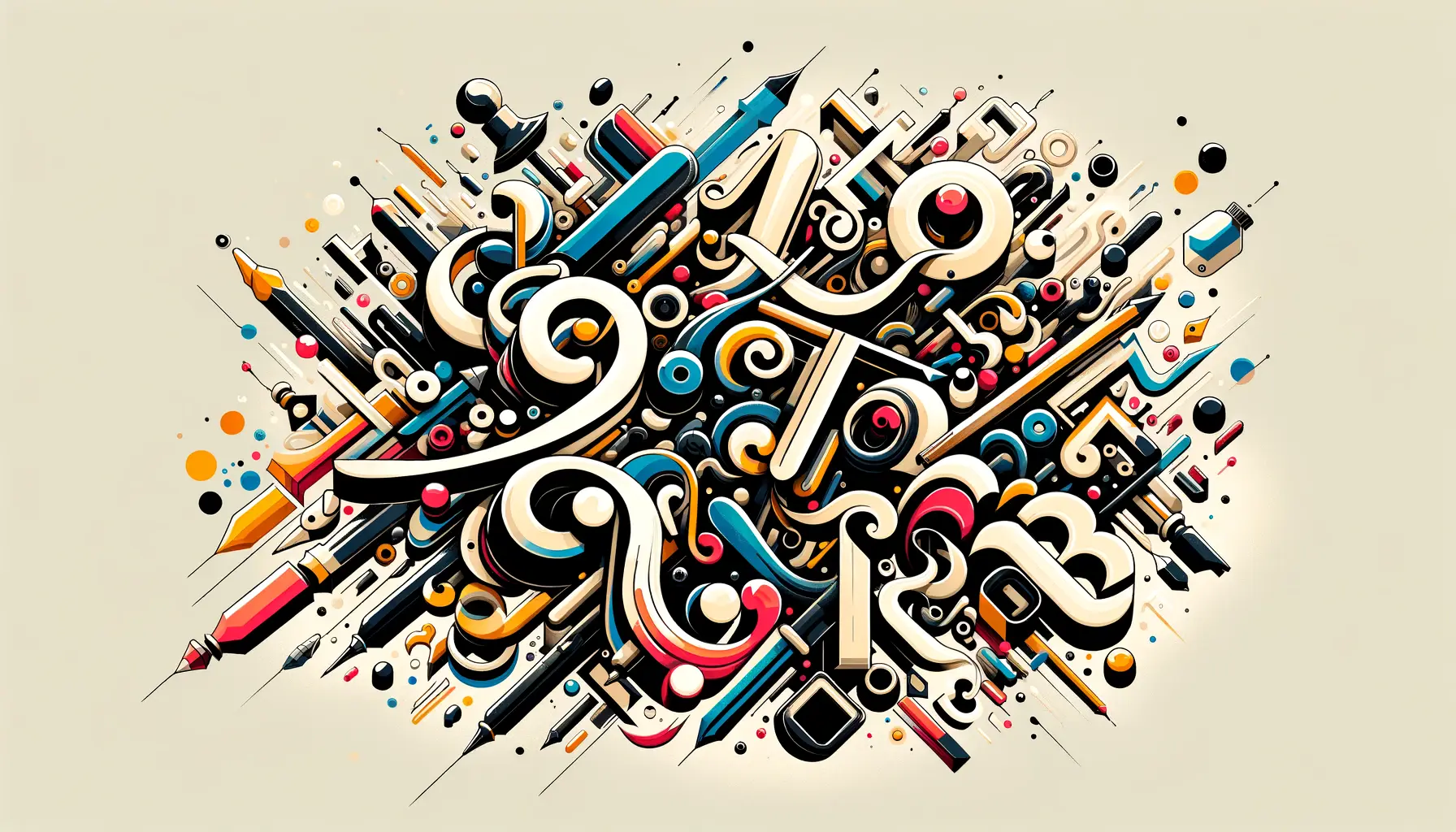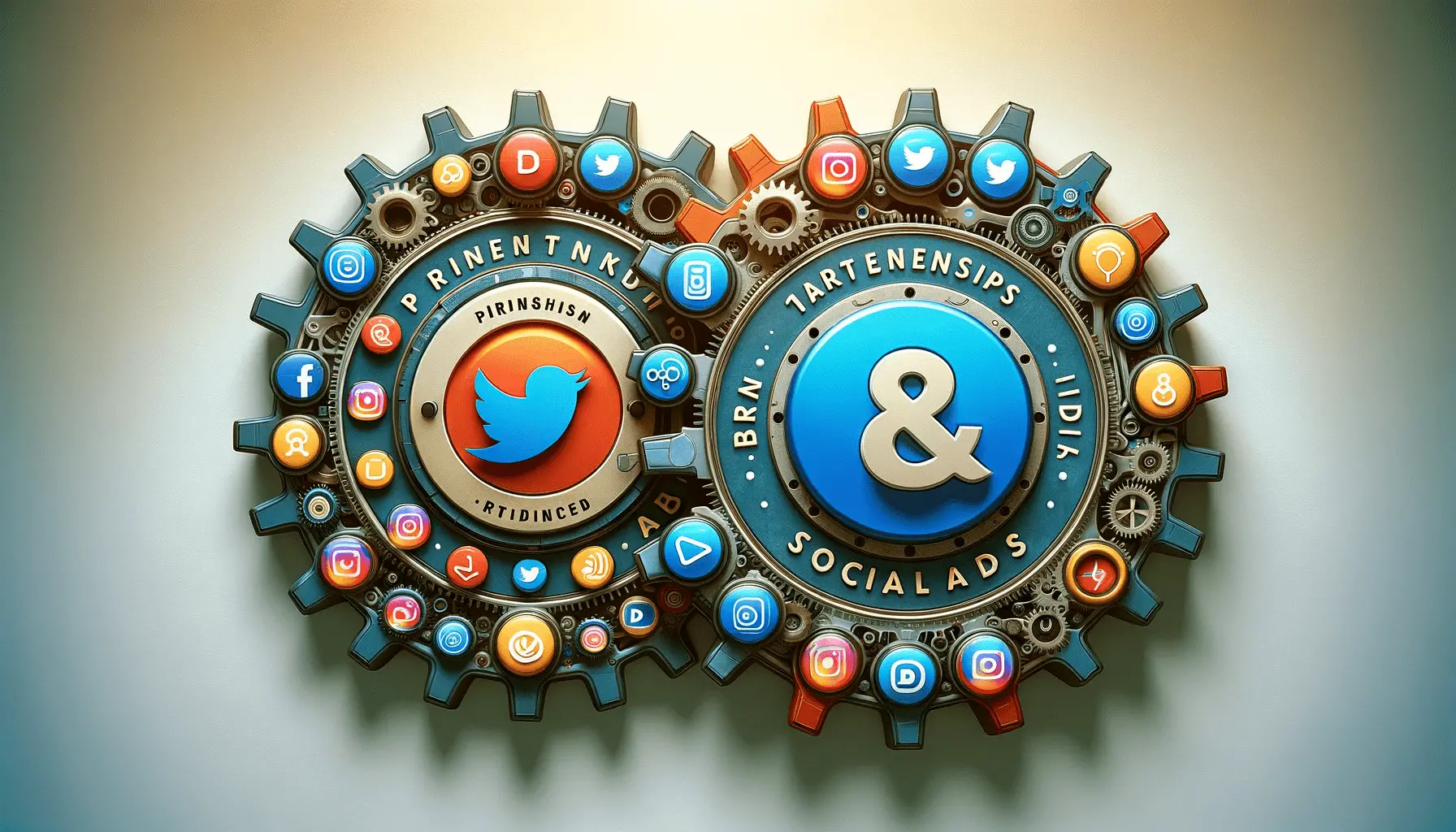In today’s competitive market, establishing a strong brand identity is more crucial than ever.
Among the myriad strategies to achieve this, the use of distinctive letter shapes in typography stands out as a powerful tool.
This approach not only differentiates a brand visually but also embeds deep psychological associations in the minds of consumers.
By carefully crafting the shapes of letters, brands can convey their unique values, personality, and story, creating a memorable and lasting impression.
Typography, the art of arranging letters and text in a way that makes written language legible, readable, and visually appealing, is a fundamental component of brand identity.
It encompasses everything from font choice to letter spacing and alignment.
However, the shape of letters goes beyond mere aesthetics; it plays a pivotal role in brand perception.
Distinctive letter shapes can evoke emotions, suggest qualities, and even influence decision-making processes, making them a potent element in the branding toolkit.
- The Power of Typography in Branding
- Strategic Design Choices in Letter Shapes
- Incorporating Letter Shapes into Brand Strategy
- Evolution of Typography in Branding
- Global Influence on Typography Choices
- Future Trends in Typographic Design
- Typography’s Role in Digital Branding Strategies
- Maximizing Brand Potential through Distinctive Letter Shapes
- FAQs on Enhancing Brand Identity with Distinctive Letter Shapes
The Power of Typography in Branding
Creating Emotional Connections
The shapes of letters can significantly affect how a brand is perceived.
For example, rounded letters often convey a sense of approachability and friendliness, while sharp, angular letters might suggest precision and efficiency.
By selecting letter shapes that reflect the brand’s personality, companies can forge a stronger emotional connection with their audience.
This emotional resonance is key to building brand loyalty and encouraging consumer engagement.
Moreover, the psychology behind letter shapes is deeply rooted in human perception.
Certain shapes and forms have universal associations that can be leveraged to communicate specific brand messages effectively.
For instance, a brand aiming to project an image of stability and reliability might opt for letters with a solid, squared structure, whereas a brand wanting to appear innovative and modern might choose sleek, minimalist letterforms.
Enhancing Brand Recall
Distinctive letter shapes also play a crucial role in brand recall.
In a sea of competitors, a brand with a unique typographic identity stands a better chance of being remembered by consumers.
This is because distinctive typography can create visual landmarks in the consumer’s mind, making the brand more recognizable and easier to recall.
The goal is to achieve a level of uniqueness that sets the brand apart while ensuring that the typography remains legible and functional.
Furthermore, the application of distinctive letter shapes is not limited to the brand’s logo.
It extends to all brand communications, including packaging, marketing materials, and digital presence.
Consistency across these touchpoints reinforces the brand identity, amplifying its impact and enhancing brand recall.
By meticulously integrating distinctive letter shapes into the broader visual identity, brands can create a cohesive and compelling narrative that resonates with their audience.
The strategic use of distinctive letter shapes in typography is a powerful tool for enhancing brand identity, creating emotional connections, and improving brand recall.
Strategic Design Choices in Letter Shapes
The strategic selection of letter shapes in typography is not a task to be taken lightly.
It involves a deep understanding of the brand’s core values, target audience, and the overall message it seeks to communicate.
Making informed design choices can significantly enhance the effectiveness of the brand’s visual identity.
Below, we explore various aspects of letter shape design and their implications for branding.
When considering the design of letter shapes for a brand, several key factors come into play:
- Brand Personality: The letter shapes should reflect the brand’s personality. Whether the brand is traditional or modern, playful or serious, the typography should align with these traits.
- Target Audience: Understanding the target audience is crucial. The letter shapes should resonate with the audience’s preferences and expectations to foster a connection.
- Message Clarity: Above all, the typography must ensure that the brand’s message is conveyed clearly and effectively. The legibility of letter shapes is paramount to avoid misinterpretation.
Impact of Letter Shape on Perception
The impact of letter shapes on consumer perception cannot be overstated.
Each design choice sends a subtle cue to the audience, influencing their perception of the brand.
For instance:
- Serif vs. Sans Serif: Serif fonts, characterized by their decorative feet, often convey a sense of tradition and reliability. In contrast, sans serif fonts, with their clean lines, are viewed as modern and approachable.
- Letter Spacing: Tight letter spacing can create a sense of sophistication and exclusivity, while wider spacing is perceived as open and accessible.
- Case Usage: The use of uppercase letters can project strength and authority, whereas lowercase letters are seen as friendly and informal.
Case Studies: Successful Brand Typographies
Examining real-life examples can provide valuable insights into the strategic use of letter shapes in branding.
Consider the following case studies:
- Coca-Cola: The flowing, cursive lettering of Coca-Cola’s logo is instantly recognizable, evoking feelings of nostalgia and happiness.
- Google: Google’s simple, sans serif typography reflects its user-friendly and innovative brand identity.
- NASA: NASA’s use of strong, uppercase letters in its logo conveys a sense of authority and technological advancement.
These examples illustrate how strategic design choices in letter shapes can significantly impact brand perception and identity.
By carefully considering factors such as brand personality, target audience, and message clarity, brands can leverage typography to create a distinctive and memorable visual identity.
Exploring the strategic design choices behind successful brand typographies reveals the profound impact of letter shapes on brand perception and identity.
Incorporating Letter Shapes into Brand Strategy
Integrating distinctive letter shapes into a brand’s strategy is a nuanced process that requires a harmonious balance between creativity and strategic planning.
This integration is not just about choosing a font or style; it’s about embedding the brand’s essence into every letter that represents it.
Here’s how brands can thoughtfully incorporate letter shapes into their overall strategy to enhance identity and recognition.
To effectively incorporate letter shapes into a brand strategy, consider the following steps:
- Brand Audit: Begin with a thorough review of the current brand identity, including its visual elements, to understand what works and what needs evolution.
- Research and Inspiration: Look into industry trends, competitor strategies, and historical typographies for inspiration, ensuring that the chosen direction aligns with the brand’s core values and audience expectations.
- Concept Development: Develop several typography concepts that reflect the brand’s personality and message. This stage should involve experimenting with different letter shapes, sizes, and arrangements.
- User Testing: Present the concepts to a sample of the target audience to gather feedback on legibility, emotional impact, and brand alignment.
- Implementation: Roll out the chosen typography across all brand materials, ensuring consistency in digital and print media to strengthen brand recognition.
Challenges and Solutions in Typography Integration
While integrating distinctive letter shapes into a brand’s strategy offers numerous benefits, it also presents challenges.
One major challenge is maintaining legibility and brand consistency across various platforms and scales.
To address this, brands should:
- Ensure that the chosen typography is adaptable and scalable, maintaining its integrity on everything from a mobile screen to a billboard.
- Develop comprehensive brand guidelines that specify typography usage, including color, spacing, and size variations, to ensure consistency.
Benefits of Strategic Typography Integration
The thoughtful integration of letter shapes into a brand strategy can yield significant benefits, including:
- Enhanced Brand Recognition: Distinctive typography can make a brand stand out in a crowded marketplace, facilitating instant recognition.
- Emotional Connection: Letter shapes that align with the brand’s personality can evoke the desired emotional response from the target audience, fostering a deeper connection.
- Consistency Across Touchpoints: A unified typographic approach ensures that the brand is consistently represented across all materials, reinforcing its identity.
By carefully incorporating letter shapes into their brand strategy, companies can leverage typography as a powerful tool to enhance their brand identity, connect with their audience on an emotional level, and achieve greater recognition in the competitive market landscape.
Strategic integration of typography requires a balance between creativity and consistency, ensuring that letter shapes effectively convey the brand’s essence across all platforms.
Evolution of Typography in Branding
The evolution of typography in branding reflects broader cultural shifts, technological advancements, and changing consumer preferences.
From the ornate letterforms of the early 20th century to the minimalist styles popular today, the history of typography in branding is a mirror to society’s aesthetic values and technological capabilities.
Understanding this evolution can provide valuable insights into the strategic use of typography in contemporary brand identities.
Initially, brands leveraged typography primarily for legibility and information conveyance.
However, as markets became more saturated, the need for differentiation grew.
This led to the exploration of typography as a tool for brand expression, personality, and emotional engagement.
The digital age further accelerated these trends, introducing new challenges and opportunities in typographic design.
Technological Advancements and Typography
Technological advancements have played a pivotal role in the evolution of typography in branding.
The advent of digital design tools and software has expanded the possibilities for typographic creativity, allowing designers to experiment with letter shapes, spacing, and layout with unprecedented freedom.
Digital platforms have also necessitated the development of responsive typography, which adapts to various screen sizes and resolutions, ensuring a consistent brand experience across devices.
Moreover, technology has democratized typography, making it more accessible to brands of all sizes.
Open-source fonts and online design platforms enable even small businesses to craft distinctive typographic identities without the need for extensive resources.
Cultural Shifts Influencing Typography
Cultural shifts have significantly influenced the use of typography in branding.
The move towards simplicity and minimalism in design reflects broader societal trends towards clarity, efficiency, and sustainability.
This has led to the popularity of clean, sans-serif fonts that convey a sense of modernity and straightforwardness.
Conversely, periods of nostalgia and retro revival have seen the resurgence of vintage fonts, as brands tap into collective memories and emotions to forge connections with their audience.
Consumer preferences have also shaped typographic trends.
Today’s consumers value authenticity and personalization, prompting brands to adopt hand-drawn or custom letterforms that reflect a human touch.
The rise of social media and digital content has further emphasized the need for typography that is not only visually impactful but also optimized for readability and engagement in digital formats.
The evolution of typography in branding is a testament to its power as a tool for communication and differentiation.
By staying attuned to technological advancements, cultural trends, and consumer preferences, brands can leverage typography to craft identities that are not only visually distinctive but also deeply resonant with their target audiences.
The strategic use of typography in branding has evolved from a focus on legibility to a sophisticated tool for emotional engagement and brand differentiation.
Global Influence on Typography Choices
The global landscape of branding and design has a profound impact on typography choices.
As brands expand their reach across borders, the need to adapt and resonate with diverse cultural contexts becomes crucial.
This globalization of brands necessitates a nuanced understanding of how typography is perceived across different cultures and languages, influencing typography choices in significant ways.
Adapting typography for global audiences involves several key considerations:
- Cultural Sensitivity: Certain letter shapes, styles, or even numbers can have different meanings in different cultures. Brands must ensure their typography does not inadvertently convey negative or unintended messages.
- Language Compatibility: Brands operating in multiple language markets need to choose fonts that support a wide range of characters and scripts, ensuring consistency in brand identity across languages.
- Localization vs. Standardization: Finding the balance between maintaining a consistent brand identity and localizing typography to fit cultural preferences is a challenge. Some brands opt for a standardized typographic approach globally, while others adapt their typography to better align with local tastes.
Case Studies: Typography in Global Branding
Several brands have successfully navigated the complexities of global typography in their branding strategies.
For example:
- Coca-Cola: Known for its iconic script logo, Coca-Cola has adapted its logo for various languages and alphabets while maintaining the brand’s distinctive style and fluidity.
- Nike: Nike uses a simple, bold typeface for its logo, ensuring that the brand name is legible and recognizable across different cultural contexts.
- Airbnb: Airbnb introduced a custom typeface called ‘Airbnb Cereal’ across its global platform. This typeface was designed to be highly readable and friendly, reflecting the brand’s ethos of belonging anywhere.
The global influence on typography choices underscores the importance of a strategic approach to typographic design in branding.
By carefully considering cultural sensitivities, language compatibility, and the balance between localization and standardization, brands can create typography that resonates on a global scale, fostering a sense of inclusivity and connection with diverse audiences worldwide.
Navigating the global landscape requires brands to adapt their typography to meet the diverse cultural and linguistic needs of their international audience.
Future Trends in Typographic Design
The landscape of typographic design is ever-evolving, shaped by technological advancements, cultural shifts, and changing consumer preferences.
As we look towards the future, several trends are emerging that promise to redefine the role of typography in branding.
These trends not only reflect the current zeitgeist but also hint at the direction in which brand communication and design might head.
Key future trends in typographic design include:
- Increased Personalization: With the rise of digital technology and data analytics, brands are moving towards more personalized experiences. Typography will play a crucial role in this, with dynamic typefaces and customizable letter shapes offering unique user experiences.
- Sustainability in Design: As global awareness of environmental issues grows, so does the demand for sustainable design practices. In typography, this might manifest as minimalist typefaces that reduce ink usage or the adoption of eco-friendly fonts.
- Augmented Reality (AR) and Virtual Reality (VR): The integration of typography into AR and VR experiences offers new challenges and opportunities. Designers will need to consider three-dimensional space, interactivity, and legibility in immersive environments.
- Handwritten and Organic Styles: Reflecting a desire for authenticity and human connection, handwritten and organic typefaces are gaining popularity. These styles convey warmth and personality, standing out in a digitalized world.
Adapting to Technological Innovations
Technological innovations continue to shape typographic design.
Machine learning and artificial intelligence (AI) are enabling the creation of adaptive typefaces that can change in real-time based on context or user interaction.
This adaptability enhances the user experience and allows for more dynamic brand expressions.
Furthermore, the proliferation of digital screens and devices necessitates the development of typefaces optimized for legibility and readability across various platforms.
Responsive typography, which adjusts to the size and orientation of the user’s screen, is becoming a standard practice in digital design.
Embracing Cultural and Global Influences
As brands become more global, the influence of diverse cultures on typographic design becomes increasingly significant.
Multilingual typefaces that accommodate different scripts and languages while maintaining a cohesive brand identity are in demand.
This global perspective encourages cross-cultural exchange and innovation in typography, enriching the design landscape.
The future of typographic design in branding is vibrant and multifaceted, reflecting broader societal trends and embracing new possibilities offered by technology.
By staying attuned to these trends, brands can leverage typography to create meaningful, engaging, and forward-thinking identities that resonate with audiences worldwide.
The future of typographic design holds exciting possibilities for personalization, sustainability, and immersive experiences, offering new ways for brands to connect with their audience.
Typography’s Role in Digital Branding Strategies
In the digital era, typography has transcended its traditional role to become a critical element in online branding strategies.
The digital landscape offers unique opportunities and challenges for brands to express their identity and connect with audiences.
As such, the strategic use of typography in digital branding is not just about aesthetics but about enhancing user experience, improving readability, and ensuring brand consistency across various digital platforms.
Key considerations for incorporating typography into digital branding strategies include:
- Readability on Digital Platforms: With the majority of content consumed on screens, choosing typefaces that are easy to read on digital devices is paramount. This includes considering font size, line height, and letter spacing to enhance text readability and user experience.
- Responsive Typography: As users access content on a wide range of devices, from smartphones to large monitors, responsive typography ensures that text scales appropriately to provide a consistent experience across all screen sizes.
- Brand Consistency: Consistent use of typography across all digital touchpoints reinforces brand identity and helps build trust with the audience. This consistency should extend to websites, social media, email marketing, and any other digital content.
- Emotional Engagement: The choice of typeface can evoke specific emotions and convey the brand’s personality. Digital platforms offer the opportunity to use typography dynamically, changing styles to match the content’s tone or user interactions.
Optimizing Typography for SEO
Typography also plays a role in search engine optimization (SEO).
Clear, legible, and well-organized text can improve user engagement metrics, such as time on page and bounce rate, which are factors in search rankings.
Additionally, the proper use of headings (H1, H2, H3) and text hierarchy helps search engines understand and index content more effectively, potentially improving search visibility.
Moreover, the inclusion of keywords within typographic elements like headings and subheadings can further optimize content for search engines, making it easier for users to find relevant information.
Leveraging Typography in Social Media
Social media platforms are highly visual and text-heavy, making typography an essential tool for capturing attention and conveying messages quickly.
Custom graphics with branded typography can stand out in crowded social feeds, increase engagement, and drive traffic to digital properties.
Animated text and typographic videos can also add a dynamic element to social content, making it more engaging and shareable.
The strategic use of typography in digital branding strategies is crucial for creating compelling online experiences that engage users, convey brand identity, and support business objectives.
By carefully considering typography’s role in readability, brand consistency, emotional engagement, SEO, and social media, brands can effectively navigate the digital landscape and connect with their audience in meaningful ways.
Neglecting typography in digital branding strategies can lead to poor user experiences, weakened brand identity, and missed opportunities for engagement and conversion.
Maximizing Brand Potential through Distinctive Letter Shapes
The exploration of distinctive letter shapes in typography as a cornerstone of brand identity underscores its significance in today’s digital age.
As we’ve navigated through the strategic design choices, global influences, and emerging trends in typographic design, it’s evident that typography is not merely a tool for conveying messages but a dynamic force in shaping brand perception, enhancing user experience, and fostering emotional connections with audiences worldwide.
Key Takeaways for Brands
To harness the full potential of distinctive letter shapes in enhancing brand identity, brands should consider the following strategic insights:
- Align typography with brand personality to ensure that letter shapes accurately reflect the brand’s essence and values.
- Adapt typography to cater to global audiences, taking into account cultural sensitivities and language compatibility to resonate across borders.
- Stay abreast of technological advancements and cultural shifts that influence typographic trends, leveraging these insights to maintain relevance and engagement.
- Integrate typography thoughtfully into digital branding strategies, optimizing for readability, SEO, and consistency across digital platforms.
Embracing the Future of Typography in Branding
As we look towards the future, the role of distinctive letter shapes in branding is set to evolve further, driven by innovation in digital technology and a deeper understanding of consumer psychology.
Brands that proactively embrace these changes, experimenting with personalized, sustainable, and immersive typographic experiences, will be well-positioned to captivate audiences and carve out a distinctive presence in the competitive marketplace.
In conclusion, the strategic use of distinctive letter shapes in typography offers a powerful avenue for brands to express their unique identity, connect with diverse audiences, and navigate the complexities of the global digital landscape.
By prioritizing typography as a key component of their branding strategy, businesses can unlock new opportunities for growth, engagement, and differentiation, ensuring their brand not only stands out but also stands the test of time.
Quality web design is key for a great website! Check out our service page to partner with an expert web design agency.
FAQs on Enhancing Brand Identity with Distinctive Letter Shapes
Discover the essentials of leveraging distinctive letter shapes to elevate your brand identity through these frequently asked questions.
Distinctive letter shapes are unique, memorable, and align with a brand’s personality, setting it apart from competitors and enhancing brand recall.
Letter shapes can evoke emotions, suggest qualities, and influence decision-making by embedding psychological associations in consumers’ minds.
Yes, distinctive typography creates visual landmarks in consumers’ minds, making the brand more recognizable and easier to recall.
Consistency in typography across all brand communications reinforces identity, amplifying impact and enhancing brand recall.
Digital technology expands creative possibilities, democratizes typography, and necessitates responsive design for consistency across devices.
Culture influences typography through language compatibility, cultural sensitivities, and the balance between localization and standardization.
Brands adapt by choosing fonts that support multiple scripts, considering cultural meanings of letter shapes, and balancing global consistency with local preferences.
Future trends include increased personalization, sustainability in design, integration of typography in AR/VR, and the rise of handwritten styles.













